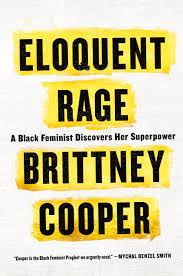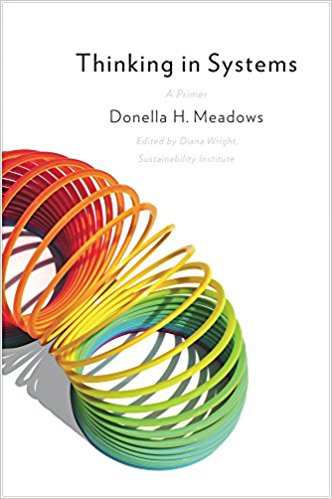Use more verbs
“Life is a verb.” – Charlotte Perkins Gilman
 I learned to read by painstakingly pronouncing the rambunctious adventures of two knee-socked, slightly irritating, good-as-gold, simple-minded, very white, and really downright boring children named Dick and Jane.
I learned to read by painstakingly pronouncing the rambunctious adventures of two knee-socked, slightly irritating, good-as-gold, simple-minded, very white, and really downright boring children named Dick and Jane.
But in China, the reading primers are different. The first page shows a little boy on the shoulders of a bigger boy. “Big brother takes care of little brother. Big brother loves little brother. Little brother loves big brother.” It’s all about the verb, the linking part, the relationship, the connective action.
As Nisbett explains, in China it’s “not individual action but relationships between people that seem important to convey in a child’s first encounter with the printed word.” While we tend to say “I am who I am,” our Asian friends may more likely make reference to social roles—“I am Lori’s friend.” We say “See Dick run;” they say “Dick loves Jane” (the Truth about Dick and Jane, at long last).
We track the development of our 2.5 year-old daughter, Tess, by the things that she knows. When we play, I ask her the names of objects: moon, star, fire truck, apple, couch, shoe, Cheerio-crushed-into-carpet, and then we move seamlessly into the category of Choking Hazards—button, quarter, marbles, Kibbles, peppermint candy.
 Studies have shown that in the U.S., children learn nouns much more rapidly than they learn verbs. (Nouns are easier to learn—they belong to categories, they’re unambiguous). Not so in East Asian countries where children learn verbs at a faster rate. Japanese mothers are more likely to ask about feelings, using feeling-related words when their children act up: “The toy is crying because you threw it.” “The wall says ouch,” Nisbett reports. By focusing on feelings, children are taught to anticipate reactions of other people… it’s all about the relationship, not the thing.
Studies have shown that in the U.S., children learn nouns much more rapidly than they learn verbs. (Nouns are easier to learn—they belong to categories, they’re unambiguous). Not so in East Asian countries where children learn verbs at a faster rate. Japanese mothers are more likely to ask about feelings, using feeling-related words when their children act up: “The toy is crying because you threw it.” “The wall says ouch,” Nisbett reports. By focusing on feelings, children are taught to anticipate reactions of other people… it’s all about the relationship, not the thing.
You can see this play out, like most things, in sentence structure: verbs in Chinese, Japanese, and Korean tend to come either at the start or finish of sentences while in English, verbs are usually buried in the middle.
 I was a serious student of Chinese for a few years a hundred years ago. I look now at the notebooks jammed full of thousands of Chinese characters, written in a sure hand, the order of those strokes impeccable, their uniformity reminiscent of rows of tightly trained soldiers or upstanding members of a marching band. Every character in the sentence the same distance apart, the sense created out of the context, that soup in which they float, not out of the words themselves—meaning made from placement, not linguistic marker.
I was a serious student of Chinese for a few years a hundred years ago. I look now at the notebooks jammed full of thousands of Chinese characters, written in a sure hand, the order of those strokes impeccable, their uniformity reminiscent of rows of tightly trained soldiers or upstanding members of a marching band. Every character in the sentence the same distance apart, the sense created out of the context, that soup in which they float, not out of the words themselves—meaning made from placement, not linguistic marker.
Thirty years ago, my friend Jack was a faculty advisor for an undergraduate thesis, “Sixteen Waysto Avoid Saying ‘No’ in Japanese" by Keiko Ueda. Jack explained it to me recently in an email when I asked about being stood up for dinner in Tokyo:
“The gist of it is that Japanese hesitate (less so these days) to say a clear ‘no’ for concerns of maintaining good relationships (face issues) and that the more experienced or sophisticated the person, the broader the repertoire (college students then had a few ways; their businessmen fathers had up to sixteen ways, including ‘yes.’) It’s not that Japanese will say ‘yes’ and then do ‘no’ but that one sends signals of ‘no’ without saying so—at least sixteen ways. So there are set expressions like the equivalent of ‘hmmm, that might be difficult’ which pretty much means ‘no.’ If the person didn’t show up for dinner he (probably), she (less likely), they (?) may have thought that their reluctance, inability for diplomatic reasons, etc., was already signaled. The Japanese are perfectly capable of saying ‘no.’ I would be interested in learning more about a culture where people couldn’t. It’s a relational thing, not a ‘content’ thing.”
 Westerners grow up in a world of objects while Easterners grow up in a world of relationships. We own objects—like little Mary Ann and Junior with their roller skates or Jane with that fancy Mercedes—but maybe it’s not the words, the nouns, the things that matter. What if Mary Ann had helped Junior learn to roller skate, rather than just concentrate on her own skates? Would we spend so much time fighting over ownership—of skates, of oil, of countries—in this vast world of ours if we focused on verbs, not things?
Westerners grow up in a world of objects while Easterners grow up in a world of relationships. We own objects—like little Mary Ann and Junior with their roller skates or Jane with that fancy Mercedes—but maybe it’s not the words, the nouns, the things that matter. What if Mary Ann had helped Junior learn to roller skate, rather than just concentrate on her own skates? Would we spend so much time fighting over ownership—of skates, of oil, of countries—in this vast world of ours if we focused on verbs, not things?
 Mary Ann is playing store. Junior is playing store. But we’re not told that Mary Ann and Junior are playing store together, now are we? Would the word “with” have been too great a leap for the young reader?
Mary Ann is playing store. Junior is playing store. But we’re not told that Mary Ann and Junior are playing store together, now are we? Would the word “with” have been too great a leap for the young reader?
 Most of us think of Scrabble as a point game laid out on a board, writes reporter Martha Ann Overland in her story about Mr. Panupol. He doesn’t. “He thinks along an axis, where point values occupy a place in space.” The story intrigues me: The rest of us play by knowing the language—the meaning behind the words. But, then again, we’re not Scrabble champions, are we? Mr. Panupol doesn’t know the meaning of any word he uses on the Scrabble board; rather, for him it’s a spatial game, like Tess learning the name for “button” or "choke" or “ambulance,” without knowing what that means.
Most of us think of Scrabble as a point game laid out on a board, writes reporter Martha Ann Overland in her story about Mr. Panupol. He doesn’t. “He thinks along an axis, where point values occupy a place in space.” The story intrigues me: The rest of us play by knowing the language—the meaning behind the words. But, then again, we’re not Scrabble champions, are we? Mr. Panupol doesn’t know the meaning of any word he uses on the Scrabble board; rather, for him it’s a spatial game, like Tess learning the name for “button” or "choke" or “ambulance,” without knowing what that means.
 See Dick run! See Jane conquer! (I couldn’t resist this image of Dick and Jane amidst the Romans).
See Dick run! See Jane conquer! (I couldn’t resist this image of Dick and Jane amidst the Romans).






